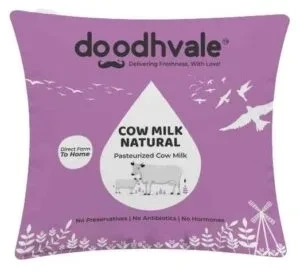Cow milk, a dietary staple enjoyed by millions worldwide, is not only rich in nutrients but also subject to fluctuating prices influenced by a variety of factors. From production costs to market demand, understanding the economics behind can provide valuable insights into this essential commodity. In this blog, we delve into the complex world of cow milk pricing, exploring the factors that influence it and how consumers can navigate the fluctuations in the market.
Factors Influencing Cow Milk Prices:
Production Costs: At the heart of cow milk pricing lies the cost of production, which encompasses expenses such as feed, labor, equipment, and veterinary care. Fluctuations in the prices of feed grains, such as corn and soybeans, can significantly impact production costs, as these grains are essential components of dairy cow diets. Additionally, factors like energy prices, labor wages, and infrastructure maintenance contribute to the overall cost of milk production, influencing its retail price.Market Demand and Supply: The principles of supply and demand play a crucial role in determining cow milk prices. When demand for milk outstrips supply, prices tend to rise, incentivizing producers to increase production to meet consumer needs. Conversely, oversupply can lead to lower prices as producers seek to offload excess inventory. External factors such as population growth, dietary trends, and global trade dynamics also influence market demand and supply, further impacting milk prices.Government Policies and Regulations: Government policies and regulations, both domestic and international, can have a significant impact on cow milk prices. Subsidies, tariffs, and trade agreements affect the competitiveness of dairy products in the global market, influencing import and export dynamics and consequently affecting domestic prices. Additionally, regulatory frameworks governing milk production, processing, and distribution can impose compliance costs on producers, which may be reflected in retail prices.Seasonal Variations and Weather Conditions: Seasonal variations and weather conditions can introduce volatility into cow milk prices, particularly in regions with distinct seasons. Factors such as temperature extremes, precipitation levels, and natural disasters can affect forage availability, cow comfort, and milk production efficiency, leading to fluctuations in supply and prices. Seasonal trends, such as increased milk production during spring and summer months, can also influence market dynamics and pricing.Navigating Cow Milk Prices:
Compare Prices: Keep an eye on cow milk prices at different retailers, both online and offline, to identify trends and potential savings opportunities. Consider factors such as packaging size, brand reputation, and product quality when comparing prices to ensure value for money.Look for Deals and Discounts: Take advantage of promotions, discounts, and loyalty programs offered by retailers to save on cow milk purchases. Buying in bulk or opting for subscription services may also yield cost savings over time.Consider Alternatives: Explore alternative sources of milk, such as plant-based options like almond, soy, or oat milk, which may offer competitive pricing and nutritional benefits. However, be mindful of ingredient quality, processing methods, and environmental considerations when making substitutions.Conclusion: Cow milk prices are influenced by a multitude of factors, from production costs to market dynamics, making them subject to fluctuations and variability. By understanding the economics behind cow milk pricing and adopting savvy shopping strategies, consumers can navigate the market with confidence, ensuring access to this essential and nutritious beverage at competitive prices. Whether you're a budget-conscious shopper or a savvy consumer seeking value and quality, staying informed and proactive can help you make the most of your cow milk purchases in an ever-changing economic landscape.


